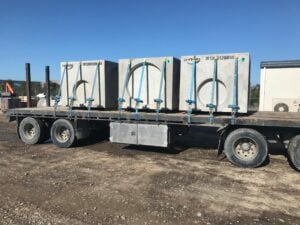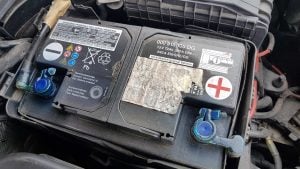
There are restrictions on importing left-hand drive (LHD) vehicles (where the steering wheel is on the left). Most have to be converted to right-hand drive before they can be registered and driven on the road in New Zealand. There are…

There are restrictions on importing left-hand drive (LHD) vehicles (where the steering wheel is on the left). Most have to be converted to right-hand drive before they can be registered and driven on the road in New Zealand. There are…

Driver training can be done either online, in-class, in-vehicle or a mix of the three. Online training: learning materials are completed using a computer, tablet or smartphone In-class: learning is done with an instructor in a classroom In-vehicle: learning is…

The flat deck refers to the area of the truck or trailer that the goods are loaded onto – it’s a large uniformly flat area which items can be placed on and secured. Trailers can be heavy or light, and…

A full trailer differs from a semitrailer in that it has an A-frame drawbar attached to a dolly at the front of the trailer, rather than a kingpin and skidplate. Full trailers (also called pull trailers) are coupled using a…

If you compare a 1950s car to a 2020s car when sitting inside while driving at night, you’ll notice just how dark the 1950s car is. Modern vehicles have screens and dials which are illuminated, plus they have a plethora…

Shipping goods around the world is made easy by the use of shipping containers which have standard sizes and can fit on ships, trains and trucks. It makes it possible for goods to be packed at the manufacturer, sealed for…

Let’s say you’re awesome at driving in reverse. Can you drive everywhere backwards? The answer is no, for several reasons. Firstly, the law states you can only drive in reverse as far as necessary to perform a manoeuvre. You will…

When decide on a career change and don’t want to drive trucks anymore, what are your options? At the moment, there’s a huge shortage of truck drivers, so experienced drivers are likely to be snapped up and there will be…

Many drivers have suffered a rollover and even more have lifted an axle or two, unaware that it happened. These drivers are frequently driving their trucks on the limit without realising it because most drivers never get rollover prevention training.…

Getting your load’s centre of gravity as low as possible and having it restrained securely are two of the three main tasks when transporting a load. The third is ensuring that you’re not overloading an axle (if you don’t know…

In a car with a petrol or diesel engine, the battery has a life of around 5-6 years, assuming it’s being used reasonably regularly, but there are ways in which you can reduce this, one of them being letting your…

A dangerous goods placard is a diamond-shaped warning sign or label displayed on a truck, trailer, portable tank or container that either conveys information about the specific hazards and risks of the goods carried, or is a generic warning that…